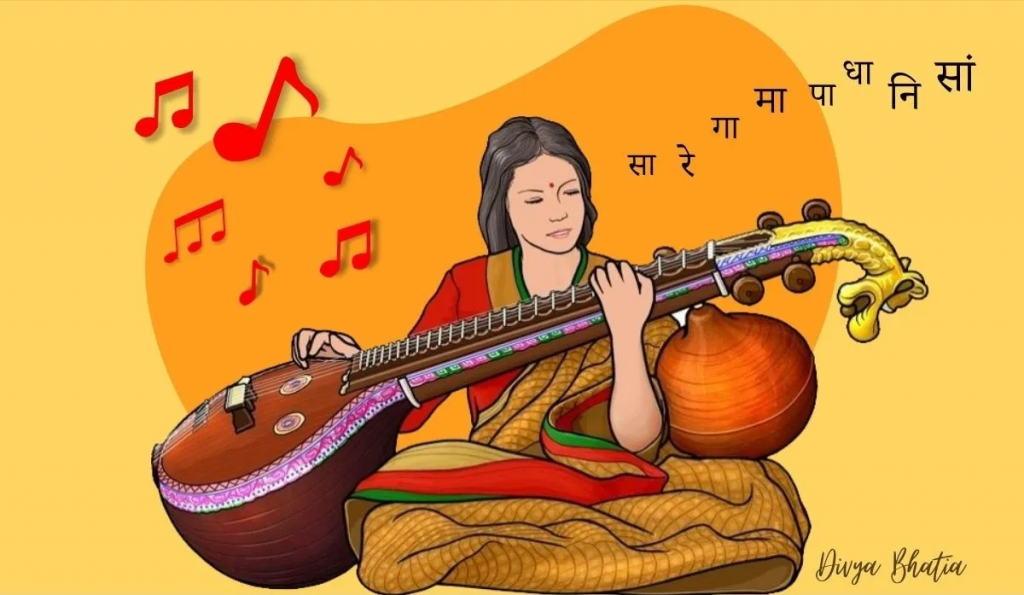Indian Classical Music, a treasure trove of artistic expression and cultural heritage, stands as a testament to the profound depth and diversity of Indian civilization. Rooted in ancient traditions, it has evolved over millennia, captivating hearts and minds worldwide. This intricate art form transcends boundaries and unites souls through its mesmerizing melodies, intricate rhythms, and profound spiritual undertones.

Origin and History of Indian Classical Music
Indian Classical Music can be traced back over two thousand years, with its origins deeply entrenched in ancient scriptures and religious rituals. It is believed to have evolved from the Vedas, the oldest scriptures of Hinduism, and the Samaveda, which contains hymns set to melodies.
Over time, it developed two distinct styles – Hindustani in North India and Carnatic in the South. Hindustani music bears the influence of Persian, Arabic, and Central Asian musical traditions, while Carnatic music has a stronger connection to the ancient Dravidian culture of the South.
The Building Blocks: Raga and Tala
At the heart of Indian Classical Music are two fundamental elements – Raga and Tala.
1. Raga: A raga is a complex melodic framework, representing a specific emotional or spiritual state. Each raga is characterized by a unique combination of ascending (Arohana) and descending (Avarohana) scales, which dictate the permitted notes, and specific phrases, known as ‘pakad’, which give the raga its distinct identity. Through the delicate interplay of these notes, artists create a rich tapestry of emotions.
2. Tala: Tala refers to the rhythmic aspect of Indian music. It is a cyclical pattern of beats that provides the underlying structure for a musical composition. Talas range from simple 3-beat rhythms to complex patterns with as many as 16 beats. The intricate play of rhythm is equally important as the melody, with artists displaying their virtuosity through rhythmic improvisations.
The Masters and their Legacy
Indian Classical Music has been enriched by a lineage of legendary musicians and composers who have left an indelible mark on the art form. From the legendary Tansen to Ustad Bismillah Khan, Lata Mangeshkar to M. S. Subbulakshmi, these maestros have not only elevated the musical landscape but have also served as custodians of cultural heritage.
The Performance: A Spiritual Journey
A live performance of Indian Classical Music is a transformative experience. The artist embarks on a spiritual journey, delving deep into the emotions and essence of the chosen raga. The audience, too, becomes an integral part of this journey, their collective energy and appreciation forming a vital feedback loop.
Improvisation: The Soul of the Art
One of the most intriguing aspects of Indian Classical Music is the art of improvisation. Within the confines of the chosen raga and tala, the artist weaves a spontaneous narrative, exploring the nuances and intricacies of the musical landscape. This improvisational element ensures that no two performances of the same raga are identical, creating a sense of immediacy and intimacy with the audience.
The Global Impact
Indian Classical Music has transcended geographical boundaries and captivated audiences around the world. From Ravi Shankar mesmerizing audiences at Woodstock to collaborations between Zakir Hussain and John McLaughlin, it has found resonance in the hearts of diverse cultures.
Preservation and Innovation
While staying rooted in tradition, Indian Classical Music continues to evolve. Contemporary musicians are exploring new horizons, experimenting with fusion genres, and collaborating with artists from various disciplines. This dynamic approach ensures that the art form remains vibrant and relevant in a rapidly changing world.
Conclusion:
Indian Classical Music is not just a form of entertainment; it’s a spiritual journey, a cultural bridge, and a timeless echo of a rich heritage. As we immerse ourselves in its melodies and rhythms, we become part of a legacy that spans centuries, linking us to the very essence of humanity. In its intricate patterns and evocative expressions, we find a reflection of our own inner world, reminding us of the profound beauty that lies within us all.

